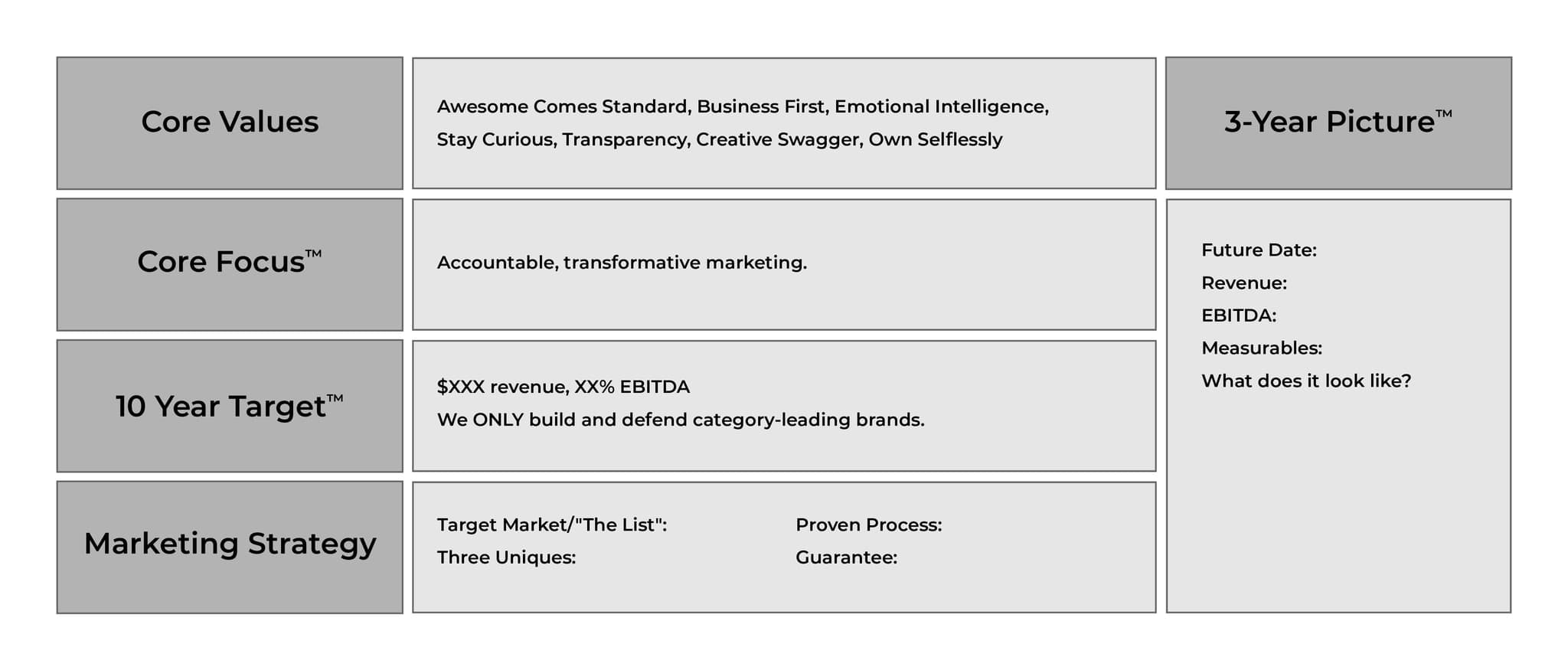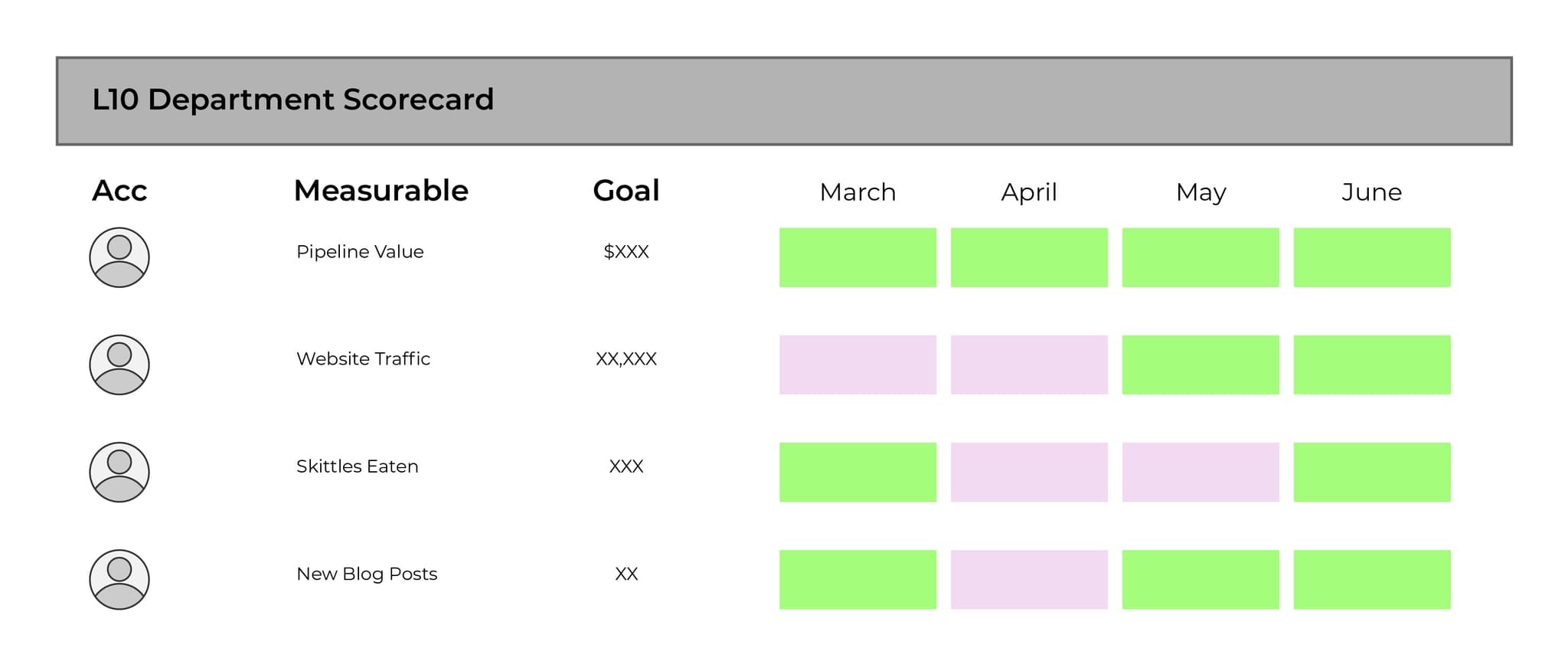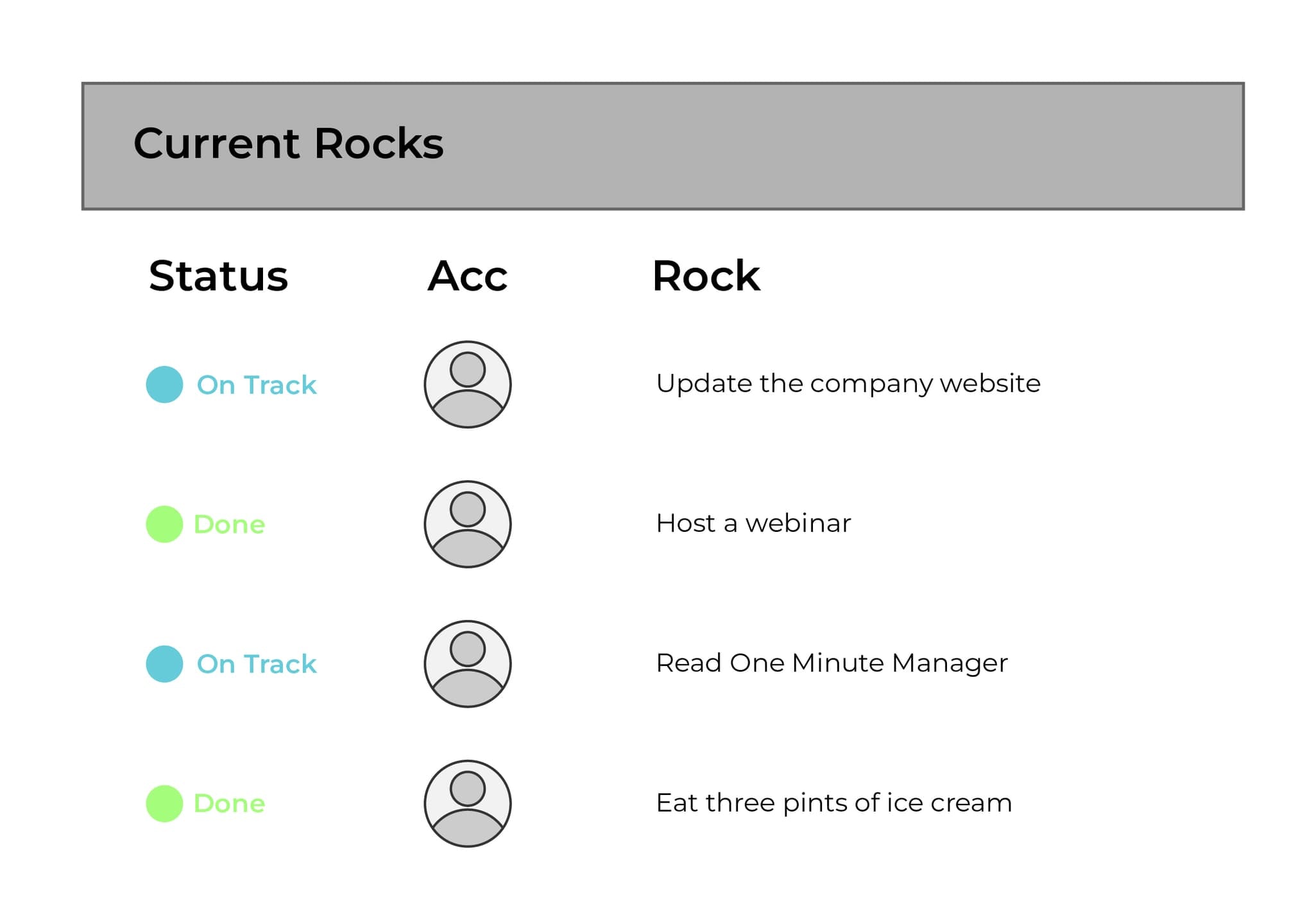Clarity is king. Whether you’re talking on the phone, reading an email, or examining a project brief, a lack of clarity leads to confusion, to miscommunication, to trouble. That’s true in the best of times and the worst of times, and as you might have noticed, the pandemic has us closer to the latter than the former right now. That means clarity and certainty, where we can find them, are more important than ever.
Here’s what business leaders and employees alike can do to take as much control as possible where they can, and at least make the workplace somewhat a safe haven from COVID-induced turmoil. I’m going to use Element Three as an example, via EOS®—the Entrepreneurial Operating System®—which we’ve implemented here over the past couple years with positive results. You, of course, don’t need to jump on board, it’s just an example of one way to get there.
Why change course now?
Why does this matter so much? Why not just try to press on like normal? Well, honestly, you wouldn’t be wrong to ask that question. Certainty is always important, and the more clarity you can provide your compatriots on a day-to-day and longer-term basis, the better. The things we’re talking about here should be a part of your regular routines.
But, yeah, when something like a pandemic throws everything into chaos, the more we can find solid ground to stand on, the better. We have enough to worry about as it is. We don’t need our work to add to the confusion and disarray.
So what does that look like?
Set a course for the ship of business
It can certainly be tempting, in times of uncertainty, to just wing it. Things are changing all the time, right? Why not simply lean into it and go with the winds of change, wherever they blow? As you might guess, based on everything I’ve said so far, I’m going to advise against that.
So, if you thought this was going to be your ticket out of having to develop a marketing strategy, I guess you’re out of luck. It’s definitely going to look different from what you’re used to, even as we (hopefully) start to defrost our social and professional lives a little bit. But you do have to have a strategy. You have to have a plan, a direction to aim the efforts of your team.
And while of course you’re going to need to make adjustments as circumstances require, you need to think of it more as steering your ship around stormy waters while staying on course as much as you can. Not like setting out to cross the ocean without a thought as to how you’ll get there.
Build an overall strategy based on your organization’s situation, and stick to it as much as you possibly can. Be clear when you do have to change plans, rather than simply hoping for the best.
One of the ways we do this is by using EOS®’ Vision/Traction Organizer™. The V/TO™ is a way for us to lay out a strategic plan over one-year, three-year, and ten-year periods. We adjust those strategies as circumstances demand (like, for example, when a global health crisis occurs), but we don’t change course on a whim. We set out our plan, and we stick to it as closely as we can. It works because it’s based on what’s always true about Element Three. The V/TO™ includes things like our core values, our core focus—the purpose that drives us as a business—and the unique selling points that make us attractive to the businesses we want to work with.

Define—and communicate—goals as clearly as possible
Of course, plan or no plan, things are going to change. That’s kind of the point to all of this. We’re trying to minimize the effects of change, not eliminate it altogether. That’s a fool’s errand, as any marketer knows—in the best of times, we deal with change as best we can, but we know it’s coming. And these aren’t the best of times.
One way to ameliorate the effects of today’s uncertainty is to be as clear as possible internally. Based on your marketing strategy, define your expectations, priorities, and goals clearly. The capacity and availability of individual team members and other resources can change at the drop of a hat. But with clearly communicated objectives, they’ll know what’s important and what can wait. If an emergency hits, they can make their own determinations regarding what gets put on the back burner. Rather than having to ask for clearance from a superior, they’ll have the autonomy to make the call on their own—making your team that much more agile.
Make sure everyone knows what the overarching priorities of your team are, and what their individual part of that plan entails. And if (or, more likely, when) things change, make sure everyone affected knows what those changes mean for them specifically. Give them a leg to stand on so when things shift, they don’t lose balance immediately.
The EOS Scorecard™ helps us keep our goals front and center. The numbers we track only change after a fair amount of discussion, which means there’s thought and strategy behind every KPI we choose to track. No matter what’s going on, each and every one of us has that scorecard to go back to—if we’re ever unsure about what our goals are, we have only to look at our KPIs. And when things change quickly, we can prioritize our reactions based on what’s most likely to keep those numbers high, or raise them. With scorecard in hand, what needs to be done is rarely in question.

Pick the projects that are crucial, and stick with your decisions
For the work your team does to have any real return on investment, it needs to be based on intelligent analysis of your situation, your industry situation, and what’s really important right now. You can’t just throw a bunch of project work at the wall and see what sticks. You have to think it through.
Based on the goals you’ve set and the strategy you’ve built out, choose the projects that are most likely and most necessary to lead directly to achieving those objectives. If there are projects that were originally slated to kick off right now that aren’t going to contribute to current goals, it’s probably for the best if you cancel or delay them, or at least move them to the back burner in favor of the projects that are going to get the job done for you.
And, once you have the appropriate projects lined up, keep to that plan. As much as you can, at least. Obviously, things change, and if your priorities have to pivot then you’re going to need to reassess your priorities in the same way you did when you originally picked the projects to concentrate on. But aside from that, stick to your plan.
One of the ways that we establish these major projects is by setting priorities called “rocks.” In EOS®, the rocks a person, team, or organization set are the most important priorities for the quarter—the things that absolutely have to get done. There’s no magic way to determine what is or isn’t a rock, but if it’s critical and will take longer than a week, it’s a good fit. In only very, very rare cases, a rock can be changed or removed; usually, though, our rocks are the focus of our teams and our team members for a full quarter of the year. We spend a lot of time thinking about them to ensure they’re the right fit.

Surer footing, better work.
In times like these, everything can change on a daily basis. It’s not a comfortable way to exist, even for people like us marketers who are used to change. The more clarity and certainty one can find in each arena of life, the better—so take these steps to solidify your marketing as much as you can. It’ll improve everyone’s mood, and the work will probably be better to boot.




